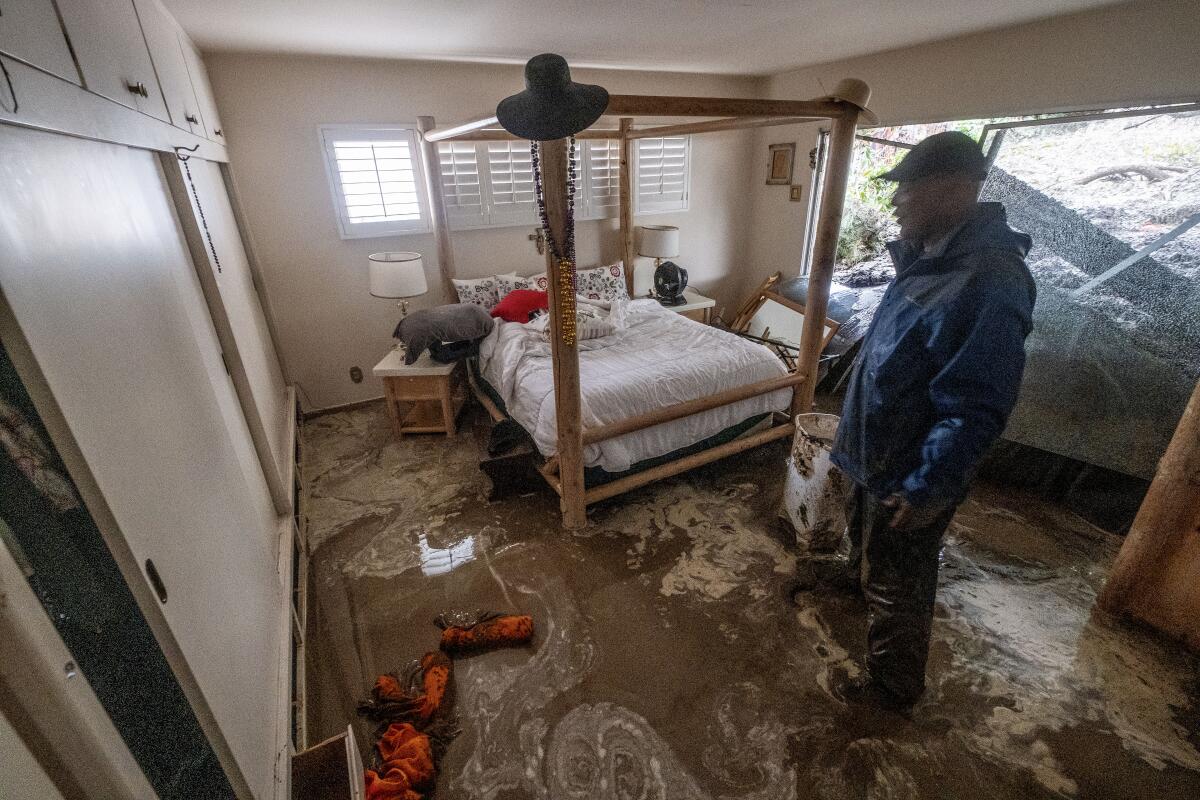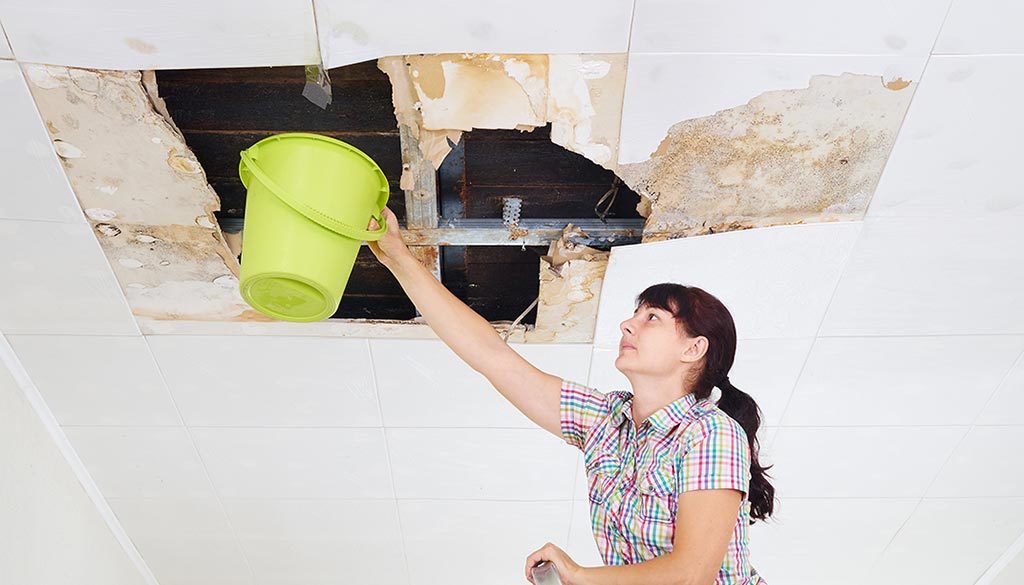Emergency Water Leak Repair to Prevent Further Property Destruction
Wiki Article
The Refine of Water Damages Cleaning: Ensuring Your Home Is Restored Properly
Water damages can be a complicated difficulty for homeowners, requiring a thorough and organized cleanup process to bring back safety and security and functionality. A comprehensive analysis is crucial to determine the degree of the damages and identify the ideal removal procedures. Following this, reliable water removal methods play a crucial duty in minimizing more injury. Nonetheless, the nuances of drying, sterilizing, and eventual remediation are equally crucial and frequently neglected. Recognizing these phases can make a significant distinction in the result of your home's repair, prompting a closer take a look at what each step involves.Evaluating the Damage
Upon uncovering water damage, the very first step is to thoroughly examine the degree of the impact. This preliminary assessment is crucial, as it aids identify the essential steps for reliable clean-up and reconstruction. Begin by checking the influenced areas, consisting of wall surfaces, ceilings, floorings, and personal valuables, to identify the source of the water intrusion, whether from flooding, leakages, or condensation.Recording the damage is crucial for both insurance coverage claims and planning repair initiatives - damage restoration services. Use photos and written notes to record the seriousness of the damages, keeping in mind any afflicted architectural components and products. Pay unique focus to areas that may not be quickly visible, such as behind walls and under rugs, as concealed moisture can cause further difficulties, including mold growth
Furthermore, assess the timeline of the water exposure. The longer the materials stay wet, the better the potential for damage. Comprehending the period of direct exposure will educate the necessity of removal efforts. Ultimately, an extensive assessment lays the groundwork for a successful water damages cleaning procedure, ensuring that all affected areas are attended to successfully and extensively.
Water Extraction Techniques

Experts usually utilize submersible pumps for bigger volumes of water, which can rapidly reduce flooding in cellars or various other affected locations. For smaller sized amounts, wet/dry vacuum cleaners are commonly used to remove residual moisture from carpetings and hard surface areas. Furthermore, using portable extractors permits targeted removal in confined areas or areas with fragile products.
In instances of infected water, such as sewage or floodwater, progressed removal strategies might involve making use of biohazard devices to guarantee safety and security and conformity with health laws. High-powered extraction devices are important in lessening water retention in structural products, which can lead to mold and mildew development and structural wear and tear if not attended to promptly.
Eventually, the performance of water extraction strategies plays an essential duty in the general success of the water damages cleaning process, preparing for subsequent restoration initiatives.
Drying and Dehumidification
When standing water has been effectively drawn out, the following crucial phase in the water damages cleaning process is drying and dehumidification. This action is vital to prevent additional damages and mold and mildew development, which can occur within 24 to 48 hours in wet settings.To achieve efficient drying, specific equipment such as industrial-grade air moving companies and dehumidifiers is used. Air moving companies flow air across wet surfaces, boosting dissipation rates, while dehumidifiers decrease humidity degrees airborne, promoting a favorable atmosphere for drying. The combination of these devices ensures that wetness is extracted from floorings, wall surfaces, and home furnishings, allowing them to completely dry extensively.
It is essential to monitor the drying process carefully. Professionals typically utilize wetness meters to evaluate the wetness material in different materials, guaranteeing that all impacted areas reach acceptable dry skin degrees. This careful method helps emergency water leak repair to stop covert dampness pockets that might bring about architectural damage or unhealthy mold and mildew development.

Cleaning and Sanitizing
After the drying out and dehumidification phase is full, the next important action in water damage clean-up is cleaning and disinfecting the impacted locations. This procedure is critical to avoid the growth of mold and mildew, bacteria, and various other microorganisms that grow in moist settings.The cleaning stage typically involves eliminating any kind of debris, dust, and contaminants from surface areas utilizing specialized cleaning agents. For tough surfaces, a combination of soap and water or business cleaning items is frequently used. Soft materials, such as upholstery and carpetings, may call for much more considerable cleaning techniques, consisting of steam cleansing or deep extraction methods, to make certain extensive hygiene.

Sanitizing complies with cleaning, utilizing EPA-approved disinfectants to get rid of unsafe microorganisms. This step is important, specifically in areas that may have come into contact with floodwaters or sewage, as these sources can posture serious health and wellness dangers.
Furthermore, it is necessary to resolve any staying smells, which may need using odor neutralizers or sophisticated methods like ozone therapy. Correct cleansing and sterilizing not only bring back the security and hygiene of your home but also lay the groundwork for successful reconstruction and fixings in succeeding phases of the water damages clean-up process.
Restoration and Repair Services

As soon as the evaluation is full, repair efforts can begin. This usually involves fixing or replacing broken products, making certain that all work follows regional building regulations and requirements. As an example, if drywall has actually been jeopardized, it will certainly need to be gotten rid of and replaced with brand-new product. In addition, flooring might require similar focus, depending on the level of water direct exposure.
It is essential to involve skilled repair specialists during this process, as they have the proficiency to take care of complicated repair services effectively. Additionally, they can assist minimize possible future problems, such as mold and mildew development or architectural instability, hence guaranteeing a risk-free and habitable living setting. Inevitably, reliable restoration and repairs restore the home's stability and boost its general worth.
Final Thought
Finally, the procedure of water damages cleaning is critical for restoring a home to its pre-damage problem. Each stage, from examining the damage to applying reliable water removal methods, complied with by extensive drying, sanitizing, and required repair work, plays a necessary function in guaranteeing safety and conformity with structure criteria. Efficient execution of these steps not just alleviates immediate damages yet additionally improves the long-lasting integrity and worth of the property.Water damage can be a challenging obstacle for property owners, demanding a precise and organized clean-up procedure to bring back safety and security and functionality. Eventually, a comprehensive analysis lays the foundation for a successful water damage clean-up process, making sure that all affected locations are resolved successfully and extensively.
Efficient water removal techniques are necessary in mitigating damage and stopping more difficulties complying with a water invasion occasion.In verdict, the process of water damage cleanup is important for recovering a home to its pre-damage condition. Each stage, from analyzing the damage to executing efficient water extraction techniques, adhered to by thorough drying, sanitizing, and required repair services, plays a crucial duty in making certain safety and compliance with building standards.
Report this wiki page